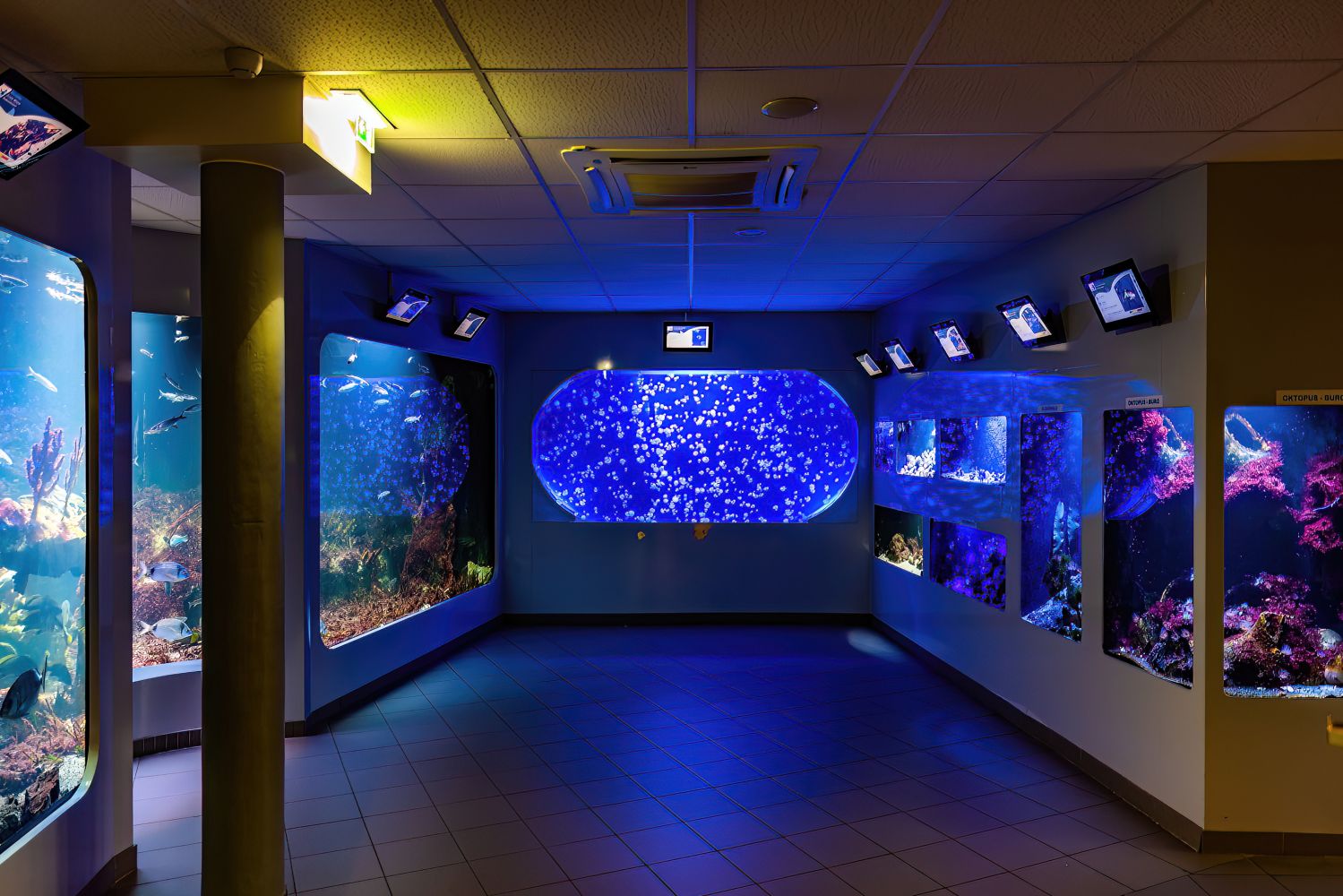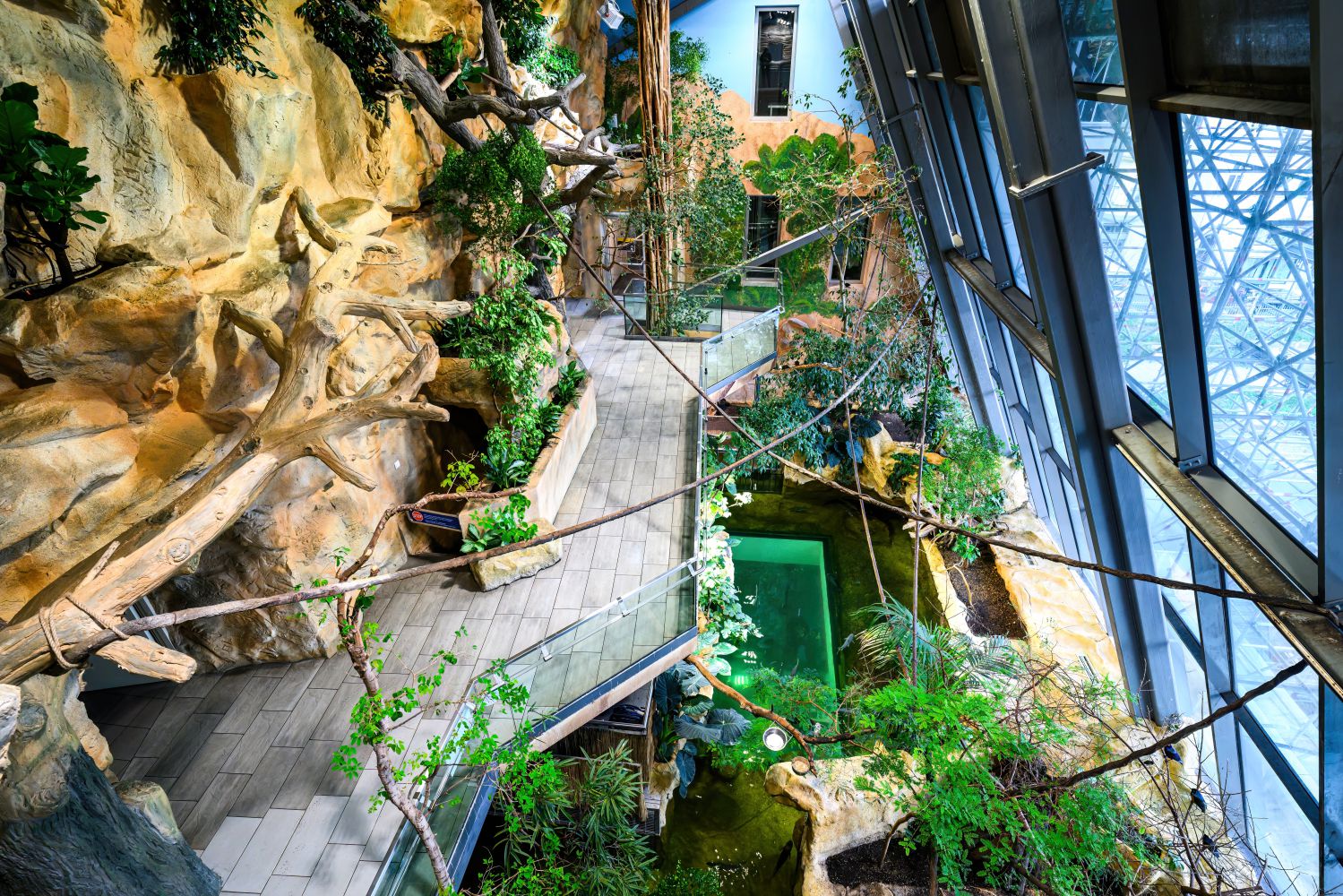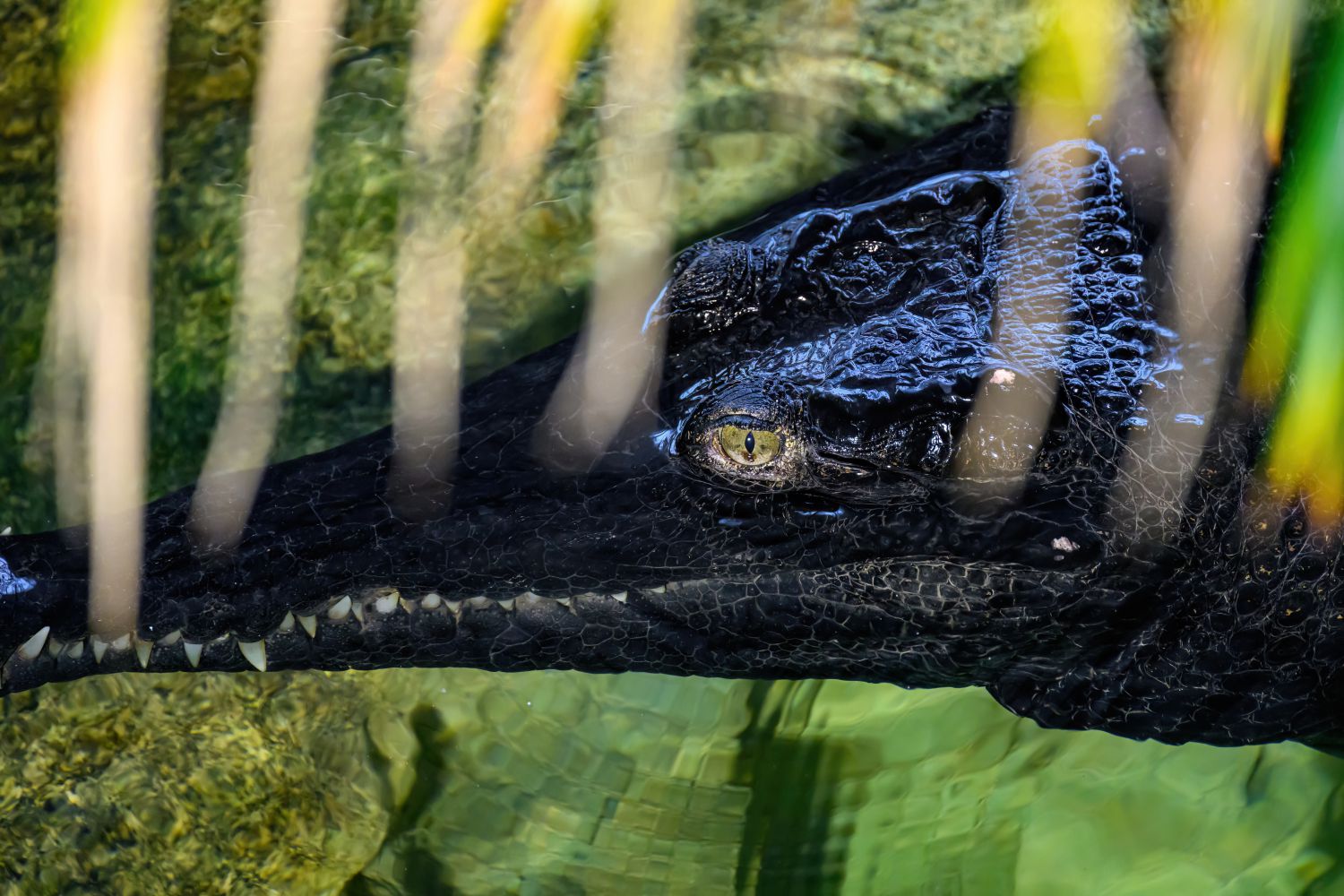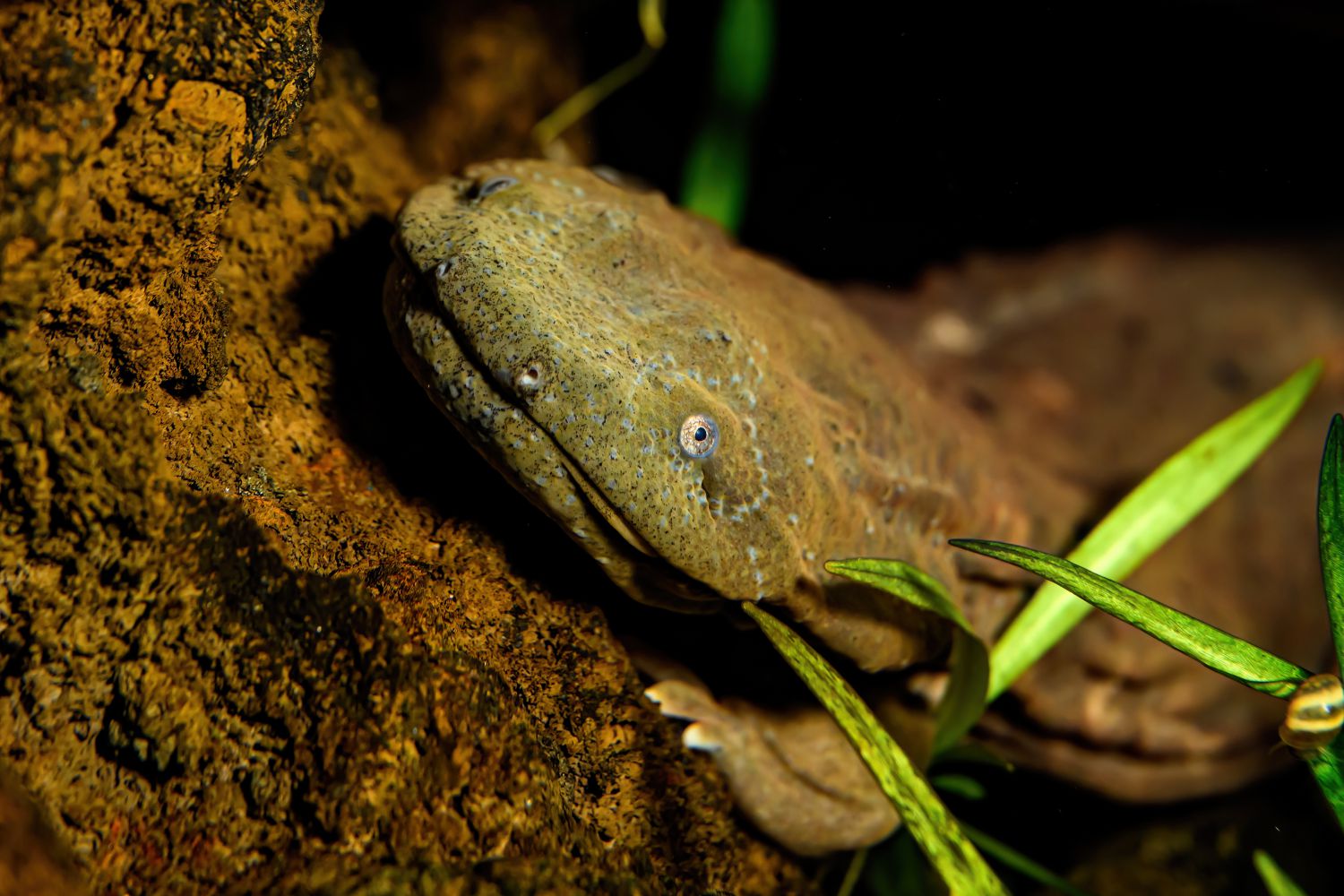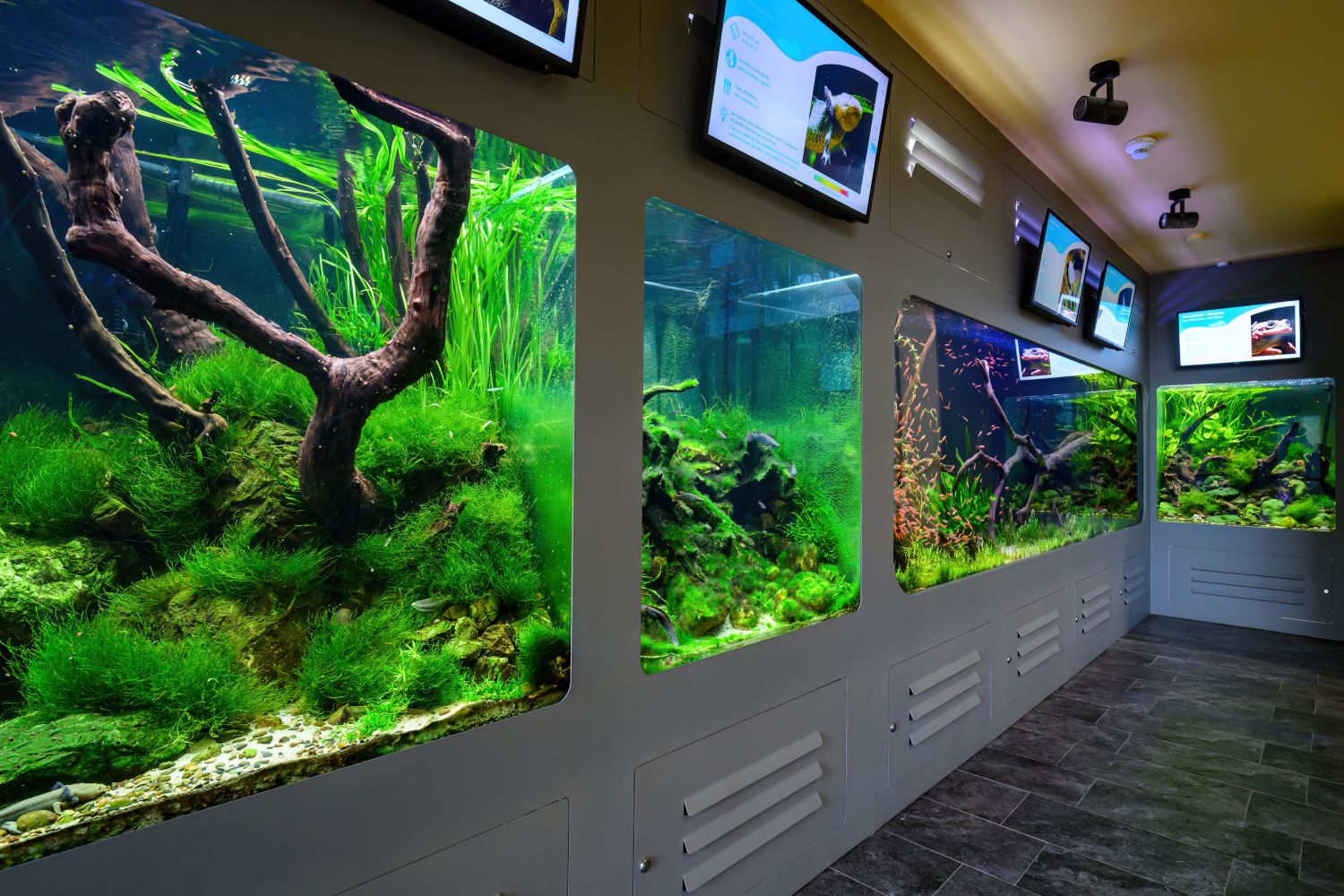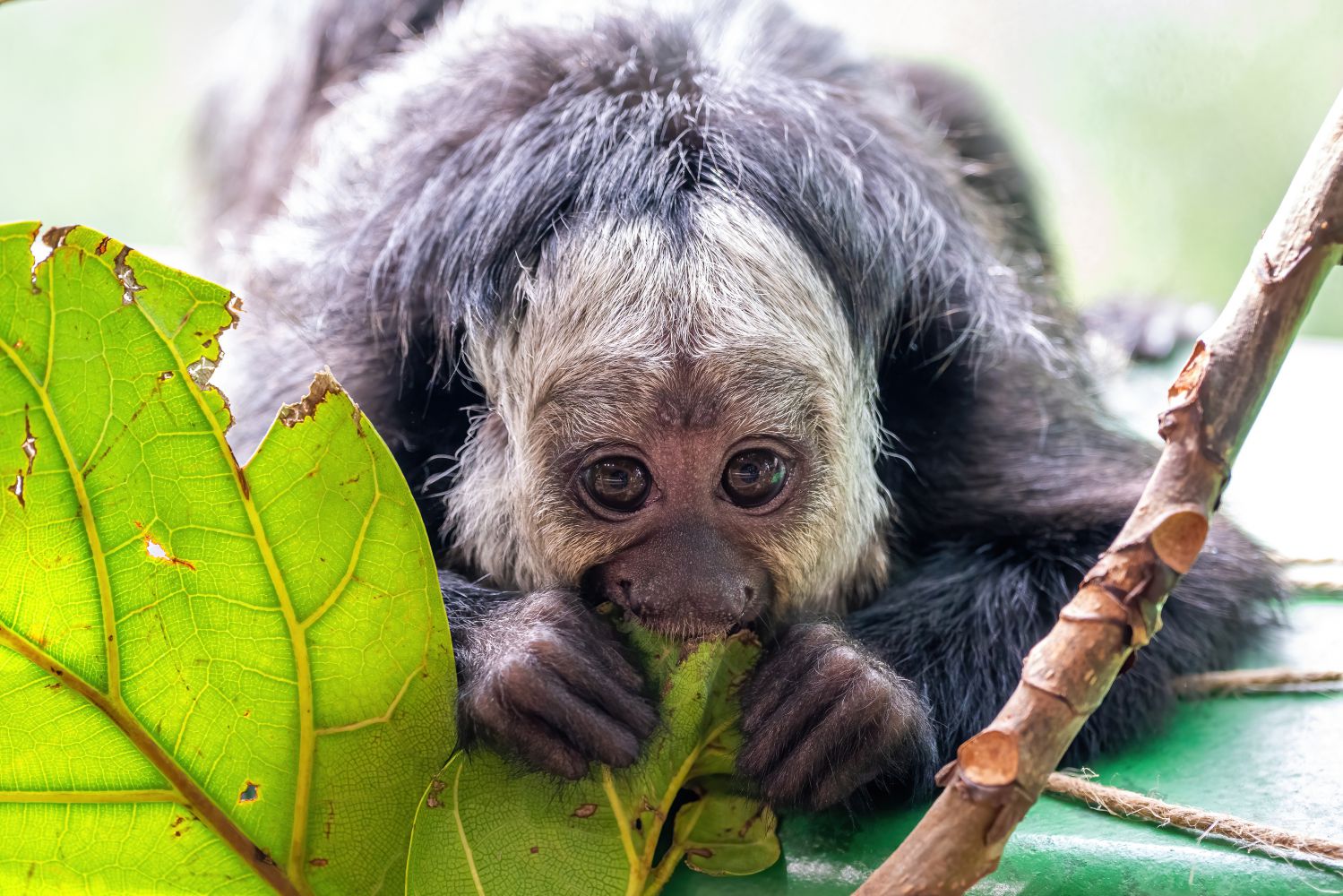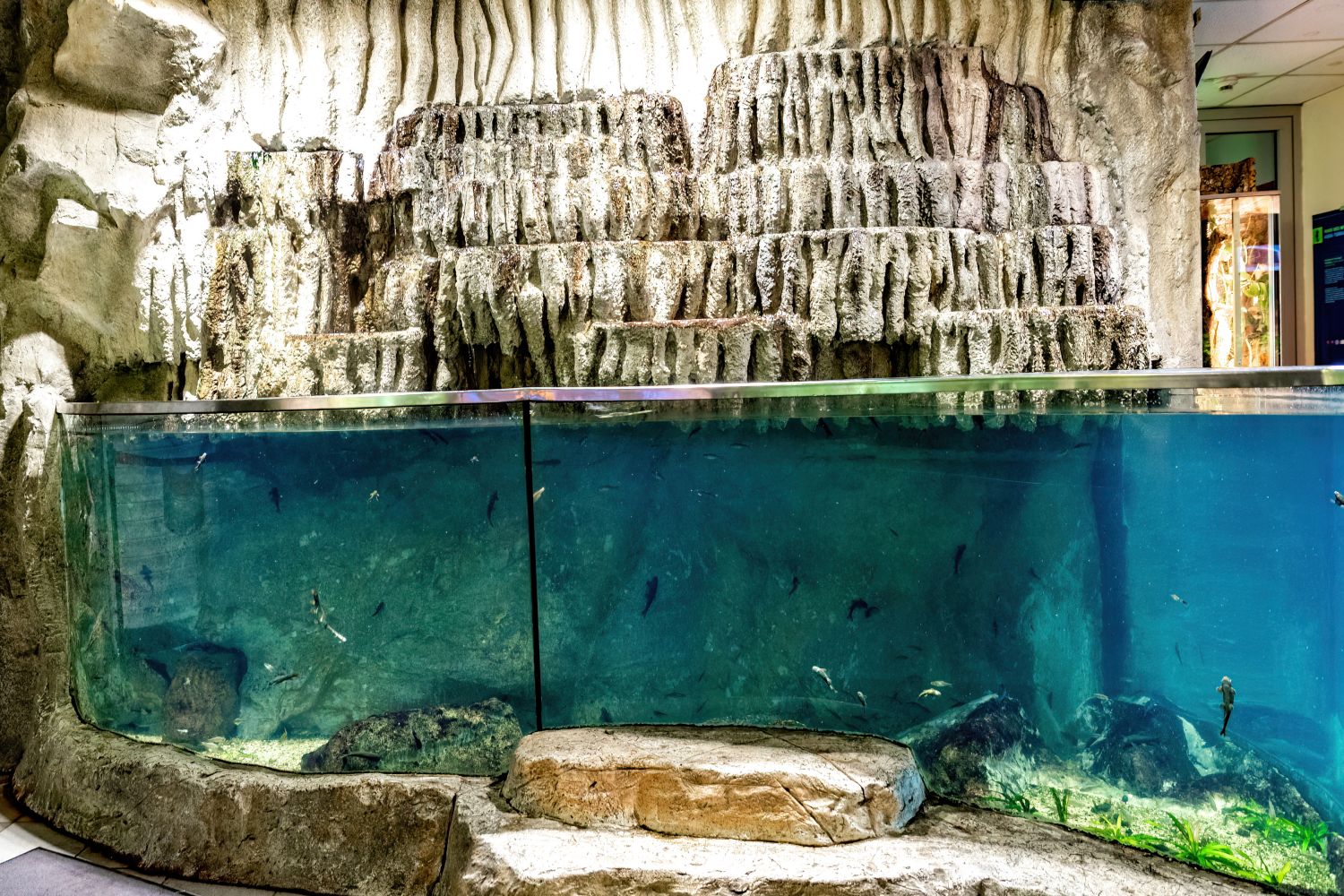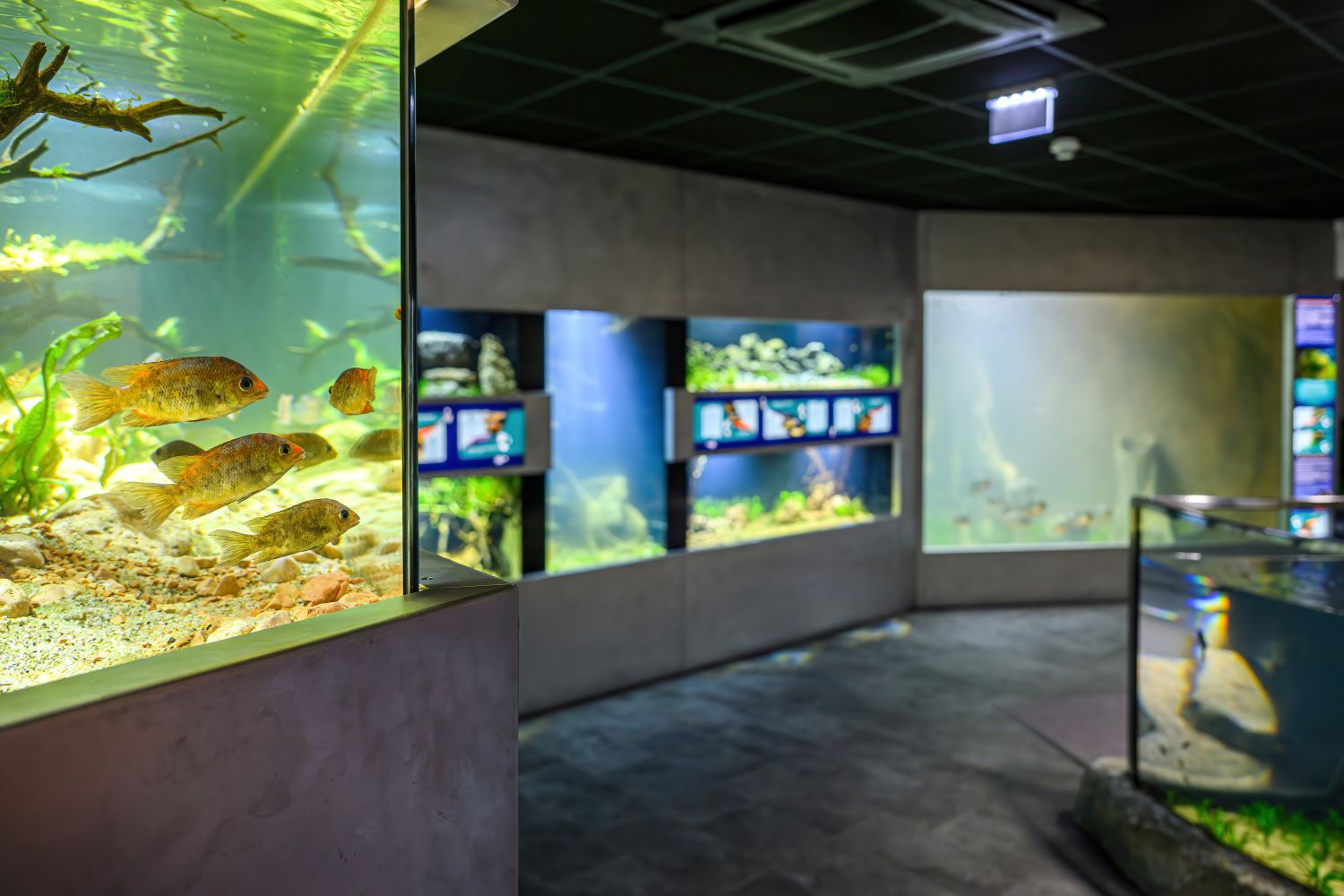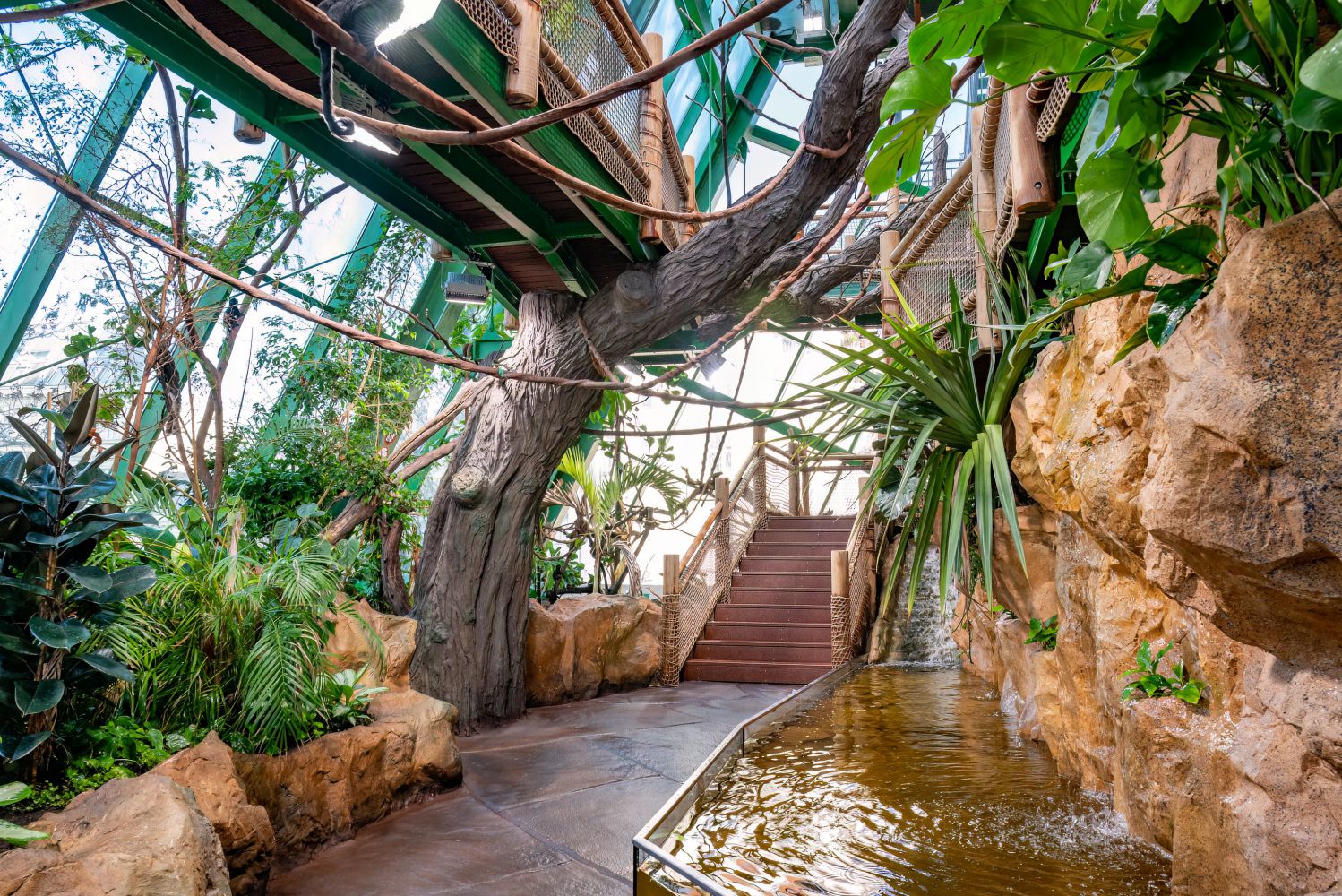Floor 2
On the 2nd floor, you can expect impressive Mediterranean animals, cheeky monkeys, well-camouflaged insects and nibbling fish.
We continue our tour at the new Mediterranean area: The Haus des Meeres started its zoo operations around 65 years ago with a Mediterranean section, and the area was renovated and modernised in 2018 – the habitats of the animals are shown true to nature! In this department you will find representatives of almost all marine animal groups. Get to know different marine biotopes: seagrass meadow, sea cave, tide pool and mud bottom show sea breams, mullets and colorful wrasses, as well as seabed animals such as sea anemones, oysters, tube worms, spider crabs, brittle stars and sea urchins. In this area you can discover dogfish and poisonous fish, octopuses, captive seahorses and colourful Mediterranean coral animals. And the largest jellyfish aquarium in Central Europe: a gyroscopic current tank that houses a swarm of cannonball jellyfish and simulates the habitat of the wide, bottomless sea.
Our tour now takes us to the Krokipark: after renovations to the exhibit, in the fall of 2024, our West African slender-snouted crocodile, Leila, moved into the Croc Park. This species is critically endangered, as only a few hundred individuals still live in their home range. Leila herself also has a unique history. Her previous owner raised her from a juvenile in Switzerland, and the story goes that as he, an author, wrote books, he would rest his feet on her back. After being removed by the authorites from this situation, she was at Zoo Lausanne until 2017, and then at Biotropica in France. If you're lucky, you can even see her from the ground floor, through the glass bottom of her pool. You can also observe a few feathered friends and the cheeky, curious cotton-top tamarins. It is worth spending some time having a look around. The birds of the Croc Park are African species, including glossy starlings, barbets and turacos.
From the Croc Park, you can access our recently built South Gallery aquariums and terrariums, which stretch across three levels in the south stairwell. On the lowest level, you'll find unique amphibian species. In addition to the rare Lake Titicaca frogs, you can visit the beloved axolotls, and their cousins, the critically endangered achoques. One of the highlights of these aquariums are the hellbenders. After almost two years of administrative red tape, we were finally able to bring these animals here from Nashville, USA. These juvenile hellbenders were bred there, can grow up to 60 cm long, and will now become part of a breeding program here in Europe. On the second floor, you can see sailfin lizards, Central American wood turtles, caiman lizards, and mata mata turtles, as well as many small fish. The third floor houses animals from southern Africa. This includes one of the most unique chameleon species, the Namaqua chameleon, which are also bred here at the zoo. The pancake tortoises and giant dragon lizards are also surely worth a visit.
Another highlight on level 2 are the travertine terraces: a freshwater aquarium with fish that can only be found around the Aegean and the Middle East. More specifically, the terraces are replicas of the world-famous Pamukkale terraces in southwest Turkey. In addition to Greek minnows, the aquarium houses reddish sucker barbs, also known as “nibble fish” or “kangal barbs”.
Directly opposite, visitors will find our newly built freshwater fish exhibit, completed in 2025. Under the theme “Endangered freshwater species around the world,” we present a wide range of animals that are on the brink of extinction — driven by habitat destruction, pollution, invasive species, and climate change. Whether fish, shrimp, or snails, every tank in the new department tells its own story!
Only captive-bred animals are kept in this exhibit. One species, the Tequila splitfin, has already been successfully reintroduced into the wild, and reintroduction efforts are also planned for species such as Skiffia francesae. We additionally employ a full-time staff member on site in Mexico who works in conservation and habitat restoration to help rebuild natural ecosystems.
Less endangered, but still a visitor favorite, are the piranhas. In the new exhibit, they now move into a spectacular, floor-to-ceiling aquarium whose deep glass panel provides an impressive underwater view — even for the smallest explorers.
From the 2nd floor you can also access the Tropical House. Originally built in the year 2000 as our first "outdoor area," this exhibit underwent extensive renovations, which were completed in February 2023, and now houses over 100 animals in a 200m² space with a ceiling height of 15m! The animals here primarily reflect the wildlife of South America. Lively monkeys such as Goeldi's marmosets, brown-mantled tamarins, and silvery marmosets, as well as our white-faced saki pair Gaby and Karl with their offspring Quentin – now the undisputed stars of our furry animal community – clamber around the exhibit. The Egyptian fruit bats are the only geographical outliers still living in the Tropical House. Following the renovations, South American bird species can be still found here, while our feathered friends from Africa and Asia are in the Crocodile Park. The beloved enclosure for tropical tortoises has also been preserved but has been transformed into an adventure playground for our tortoises with richer planting and variable terrain. Two large aquariums featuring fish and turtles from the Amazon and fish from the Orinoco complete the new bright and welcoming Tropical House.
